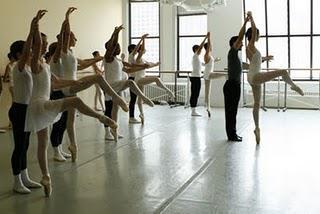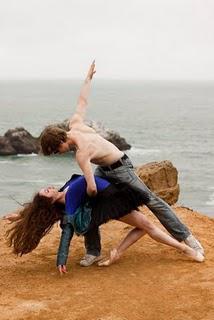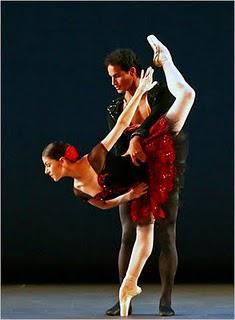There's enough information about partnering to fill an entire book. Classical ballet dancing alone and classical ballet dancing with a partner are remarkably different and can be mastered with only one thing, experience.
Now some of us don't have access to male dancers but for those of us who are fortunate enough to have a male friend/classmate who dances then be sure to practice partnering with a coach or teacher nearby. Doing elaborate lifts and turns can be dangerous so be sure not to try anything risky by yourselves.
Here are some tips and things to keep in mind while you're working on dancing with a partner:
- Wear supportive shoes. Partnering frequently requires one staying on pointe for a long period of time and soft shoes just don't provide the support that you'll need. The longer you stay on pointe, the further and further you sink into the pointe shoe so newer shoes will help a great deal.
- Stay on your leg. I can't tell you how many times my teacher has reminded me of this. Although it may be the boy's responsibility to put you in the proper position and your job to hold it, during things like supported pirouettes and finger turns, it's your job to keep that standing side straight and to get yourself into that position. Referring back to my post "The Secret to Turning", you have to stay aligned just like in a regular pirouette. Should you start to fall off then that's when the boy steps in to shift you back towards where you want to be. Talk to your teacher and have them show you exactly where you want to be during any pirouette.

- Spot. When you partner it can be very overwhelming and strange at first. You'll see arms and legs flying all over the place, one second you're on the ground and the next second you're being lifted across the stage. So with all this movement it would be very easy to become dizzy and disoriented. In order to prevent this (especially while turning) you need to spot. I'm sure you've heard your teacher say it before. To spot you must focus on one thing in front of you and leave your head facing that direction as long as possible before whipping it around. Spotting will greatly help prevent the dizzying effect.
- Practice. Rehearsal time is the only way to perfect a dance. When partnering you don't only have to know that you are ready to perform, you have to feel confident that your partner is ready to perform as well. The way to know that you're both prepared is to seamlessly rehearse your number. That's all there is to it. Once the steps flow smoothly together and you find the right balance between dependence and independence, then you're ready.
- Communicate. I cannot stress how helpful it is to actually talk to your partner about how you're feeling with the dance. Tell them about how during the supported arabesque you'd like to be held more forward, or how during the preparation for your fish-dive you feel as though you're a bit too far away from him. Let him know what you need and listen to everything that he has to say as well. On top of that, it's fun to get to know your partner so you have an even better chemistry out on the stage, which brings me to my final tip:
- Get to know each other. More often than not, you can tell when two people are uncomfortable with each other on stage. Now, I'm not saying that you have to date your partner, but it's a good idea to know their personality a little better. Not only does it help your on stage chemistry but you will enjoy yourself more when you're comfortable with the person you're dancing with.


Thanks for reading!If you have any comments or questions then leave a comment below :)
Ballerinablogger ~
